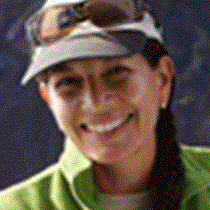Sombrero Chino & Sullivan
Today we woke up looking at Sombrero Chino and the Bainbridge Islets, located south of the fourth largest of the Galápagos Islands, Santiago (also known as James and San Salvador). Sombrero Chino and Bainbridge rocks are interesting small volcanoes, probably formed when the sea level was lower, as parasitic cones of Santiago Island. We spent the morning exploring the site by taking Zodiac rides against the backdrop of a stark landscape born of fire, and the underwater world by doing deep-water snorkeling where we encounter marine iguanas foraging on algae, penguins fishing, and some white-tip reef sharks among many species of fish. Those who preferred to stay dry went for a short, interesting walk on Sombrero Chino where we had the chance to see a Galápagos snake, many Galápagos lava lizards as well as some sea lions lying or resting on a tiny but very pretty white coral beach.
After lunch we sailed near Bainbridge Rocks to spot about 15 flamingos on an inner salt water lake. Then we sailed east around the coast of Santiago, to our next visitor site in view of the famous Pinnacle Rock, an area on the main island of Santiago known as Sullivan Bay. This area was named after James Sullivan, 2nd Lieutenant on board the H.M.S. Beagle when she arrived with Charles Darwin in 1835.
After lunch and a little siesta, Walter told us about the interesting biography of Charles Darwin, while our young explorers learned how drive a Zodiac.
In the late afternoon we disembark at Sullivan Bay for and unforgettable walk on a remarkable lava flow little more than a hundred years old, which was witnessed in 1897. We walked over smooth “pahoehoe” or ropy lava, to reach inland few volcanic formations like: cinder cones, spatter cones, hornitos, Pele’s hair, and tree casts.
In 1997, Lindblad Expeditions “adopted” Santiago Island and created a special fund (now the Lindblad Expeditions-National Geographic Fund for Galápagos) through which our guests could help support a major eradication effort to eliminate feral goats and pigs from the island. Today, the goats and pigs are completely gone, thanks to donations from our guests. This enormous success says a lot about the role that caring travelers can play in saving such a special place on Earth, our beloved Galápagos Islands.




